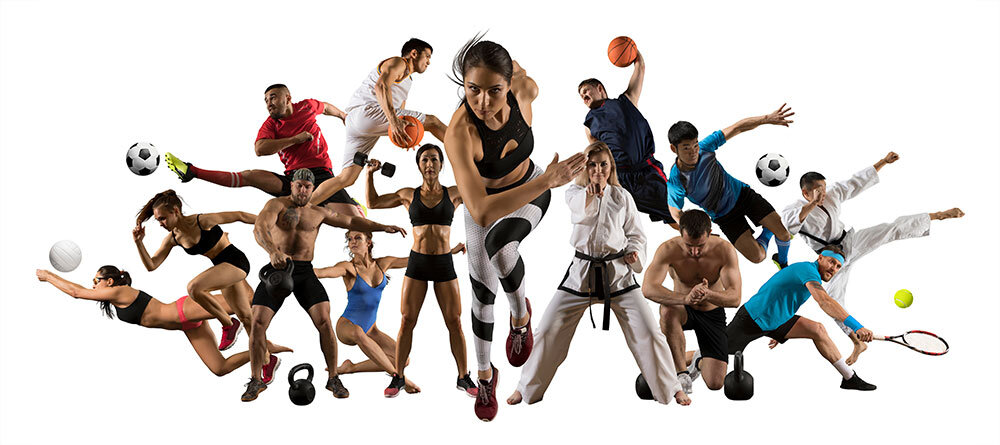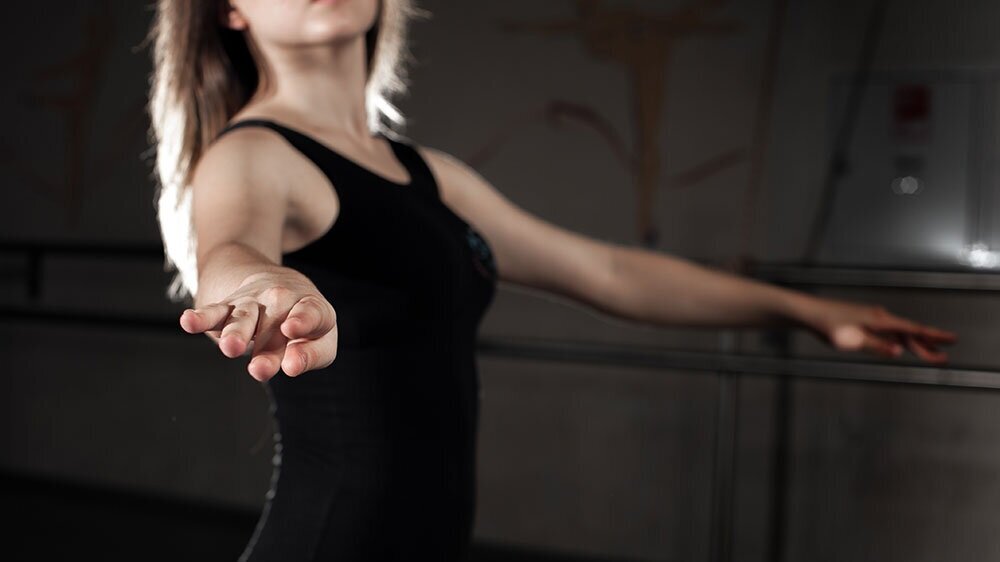10 Reasons Why Ballet is Good For Athletes & Sports Training
Ballet is becoming more popular as a cross training activity in the world of sport. Athletes from all walks of life, amateur and pro, are realising the huge benefits that ballet can bring. We’ve pulled together the top 10 reasons why ballet is good for athletes.
Cognitive ability
Speed
Coordination
Cross training
Strength
Stamina & endurance
Flexibility
Height & reflex power
Balance
Lean muscles
Cognitive ability
Ballet classes may look leisurely but they are pretty fast paced and attendees are expected to repeat exercises - usually after being shown them only once. As well as this, class members are expected to think about their legs, feet, arms and timing all at the same time. It can be challenging at first but with each class, the cognitive functions required to remember and multitask improve and fire more quickly. This can be a huge benefit in the world of competitive sport.
While we’re on the subject of cognitive benefits, ballet is a great mindfulness activity. One of our class members arrived the other week saying, ‘I’m so ready for ballet this week. It’s the only hour in my whole week where I don’t think about anything else. I can’t! I’m thinking about my legs, arms, breathing, core, timing. It’s so freeing!’
Speed
You wouldn’t necessarily associate ballet with increased speed but the muscles we work in ballet class are the same muscles we fire to kick off fast movements. Imagine a tennis or squash player on the court. He/she constantly works their upper legs, torso, arms and hips to get to the ball as quickly as possible and then lunge into position to hit the ball. A lot of demand is placed on the gluteals, the hamstrings, and the quadriceps. These are muscles which are worked constantly and very precisely in ballet. In addition, ballet movements stretch and elongate these muscles - not only strengthening them but increasing their flexibility.
The same goes for any sport which requires speed or big explosive movements from a static position - rugby, football, track and field etc.
Coordination
It’s well known that ballet dancers are super coordinated people - that’s because every exercise in a ballet class demands coordination of the entire body. The core must be engaged, posture straight, shoulders relaxed, arms moving along with the flow of the body, legs, feet and hips all moving to the music whilst maintaining a turnout, full extension of the legs and feet with every pointed toe, keeping up with the tempo of the music and anticipating the next movement for every limb and muscle. Phew! We’re out of breath just thinking about it.
Ballet really strengthens the mind-body connection and this heightened awareness of our body results in improved coordination in all areas of our life.
Cross training
It’s well known that cross training can massively enhance fitness and strength. As well as this, cross training has been proven to reduce the risk of injury. This is because the stress and load put on muscles is spread across more muscle groups. To add to this, more muscles are strengthened - meaning joints and ligaments are better supported.
Strength
Nearly every movement in ballet builds strength. Leg lifts, bends, fast movements, slow movements - they all use multiple muscle groups and intense muscular focus to achieve correctly. And don’t think that those slow balances are easy. Balancing in ballet is a full core workout - requiring engagement of the abdominals, back muscles, glutes and legs.
Ballet is a body-weight workout. We traditionally don’t use any weights or equipment to supplement the workout.
Stamina and endurance
In a ballet class, we stand at the barre a lot, exercises are only a few minutes each and some of the movements are slow - so you’d be forgiven for thinking that ballet was pretty easy and not particularly beneficial for stamina or endurance. Well, you would be wrong my friends! Even barre exercises require a huge amount of focus and strength. Repetition of exercises using the same muscle groups really works up a sweat. Follow that with an hour of intensive muscular exercises and you’ll have done a 60min pure endurance workout.
Don’t believe us? We dare you to give it a try :)
Flexibility
One huge benefit to ballet dancing is the increased flexibility. As well as strengthening muscles, we’re stretching them out with extensions of our legs, arms, torso and back. Most ballet exercises incorporate forms of stretching which is how ballet creates such elongated, lean muscles. Flexibility is a must in ballet, as we’re aiming for height, extension and length in most of the moves we work through.
The great thing is, in ballet, we are warm as we stretch. Not only does this maximise our flexibility but reduces the risk of injury to muscles. Most classes also close with a stretching session to make sure we’re fully stretched and easing out those muscles before they get a chance to cool down and tighten up too much.
Check out our online stretching and flexibility classes here.
Height and reflex power
Ballet dancing may be graceful but that doesn’t mean that when a dancer jumps, he/she isn’t using a great deal of power and strength. We watch football and rugby players hurl themselves into the air to catch a ball, or tennis players and karate competitors achieve millisecond reflex timing to return a ball or avoid a hit - and ballet is a great training regime to give a competitive edge when it comes to height and reflex. The muscles and cognitive functions used for elevation, poise and landing can all be translated amazingly onto the field, court or arena.
Balance
It’s well known that ballet is great for improving balance. Balance is another key focus area for most athletic sports - especially for those at a competitive level. All ballet exercises require a LOT of balance - even those at the barre (we’re not actually leaning on it people!). Every move in ballet requires consideration of centre of gravity, core engagement, postural alignment and focus to maintain the balance. The brain is working overtime to adjust each muscle and limb millimeters to maintain the position.
Lean muscles
Athletes often have bulky muscles - especially those that train in the gym or use any weight-bearing equipment. Because ballet is a body-weight form of exercise and ballet movements incorporate so much stretching and elongation, muscles become naturally more lean. This is a big plus for people who love to workout but are concerned about muscle bulk. Lean muscles are also more responsive and flexible - meaning they are actually less prone to sprain or tearing.
Our online Strength & Conditioning class is a great way to increase strength and tone.
Which sports can benefit from ballet training?
Pretty much all sports and athletes can benefit from ballet; karate, rugby, football and soccer, track and field, tennis, squash, MMA, swimming and diving, the list goes on!
You don’t need to don a pair of ballet shoes to benefit from ballet training. There are classes all around the country welcoming athletes. Just go along wearing your usual gym gear with bare feet or socks and give it a go!
Some dance companies will hold specific classes just for athletes of a specific sporting type - or even go along and teach sports teams at their training centres.
Those who are new to ballet are often amazed that within three to four weeks they can master a movement which they couldn’t do at all in their first class. And that goes for all ages and fitness levels. We have class members who couldn't achieve a single sit-up on day one and by week three, they are happily repeating sit-ups as part of our core workout floor exercises. On the other end of the scale, we have squash players with such tight muscles that they couldn’t pliet or lunge at all on day one - by week three, they are astonished at the change in their flexibility.
Ballet can also be an excellent form of exercise for athletes recovering from injury because it’s a low impact form of exercise. Yoga and pilates are also great for rehabilitation.
No matter what your fitness level, if you’ve never tried ballet before you can bet it will be a challenge and the guarantee is that within just a few weeks, you’ll notice the benefits.
Join Ballet Fusion Adult Ballet Fitness Classes
Ballet Fusion was set up specifically for adults to enjoy the benefits of ballet safely and effectively. Our classes are aimed at all levels and while the exercises are simple, they have been designed to give class members maximum benefit. We integrate strength exercises, floor work, core work and stretching into traditional ballet exercises. And there’s no plinky-plonky piano music, we workout to a playlist that includes all kinds of music: From classical to modern and everything in-between. Exercises change every 10-12 weeks and instructors are friendly and encouraging.
If you’d like to know more, check out our adult ballet class pages and About Us page. Or drop us a line using the form on our Contact page and we’ll get back to you straight away.
Read more:
20 Reasons why Adult Ballet is a Great Workout
Can Adults Do Ballet?






